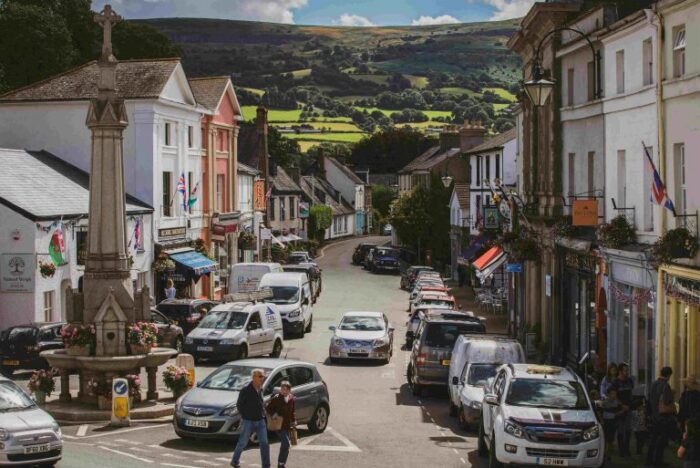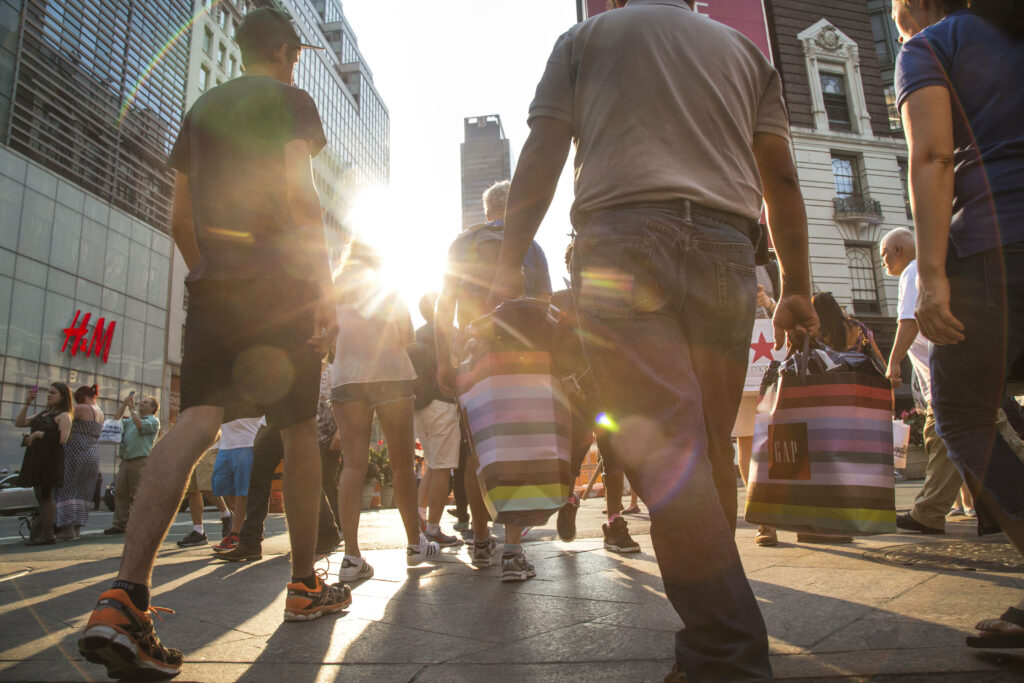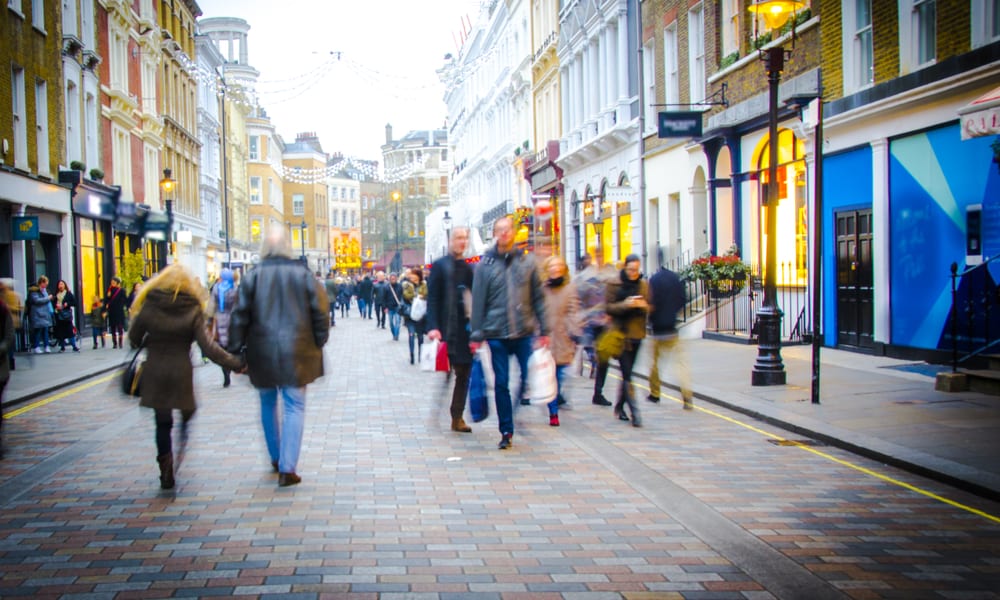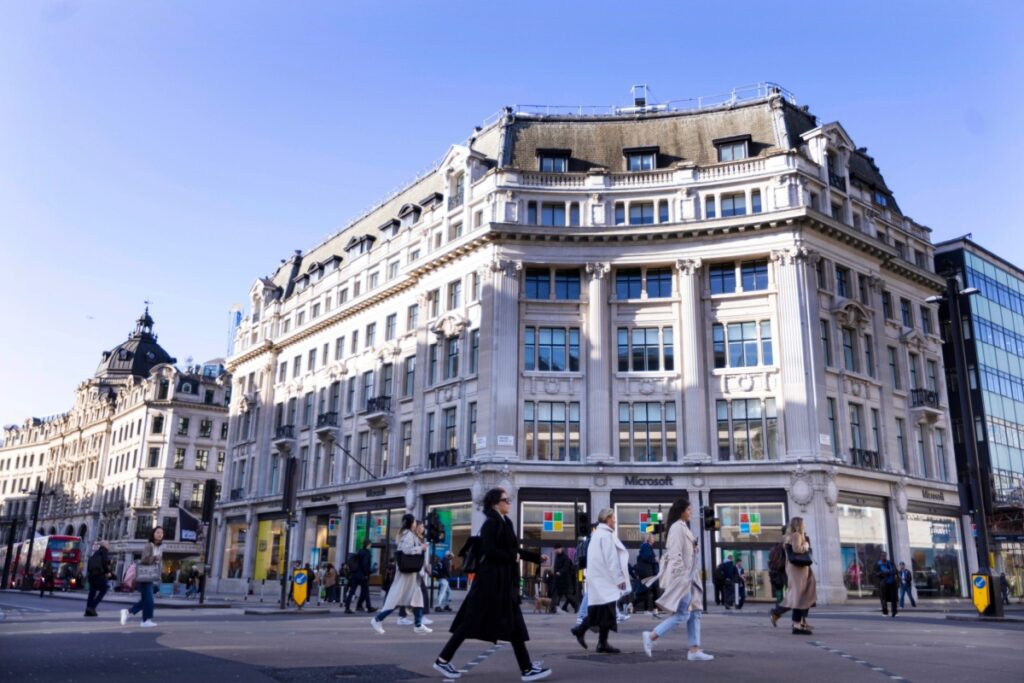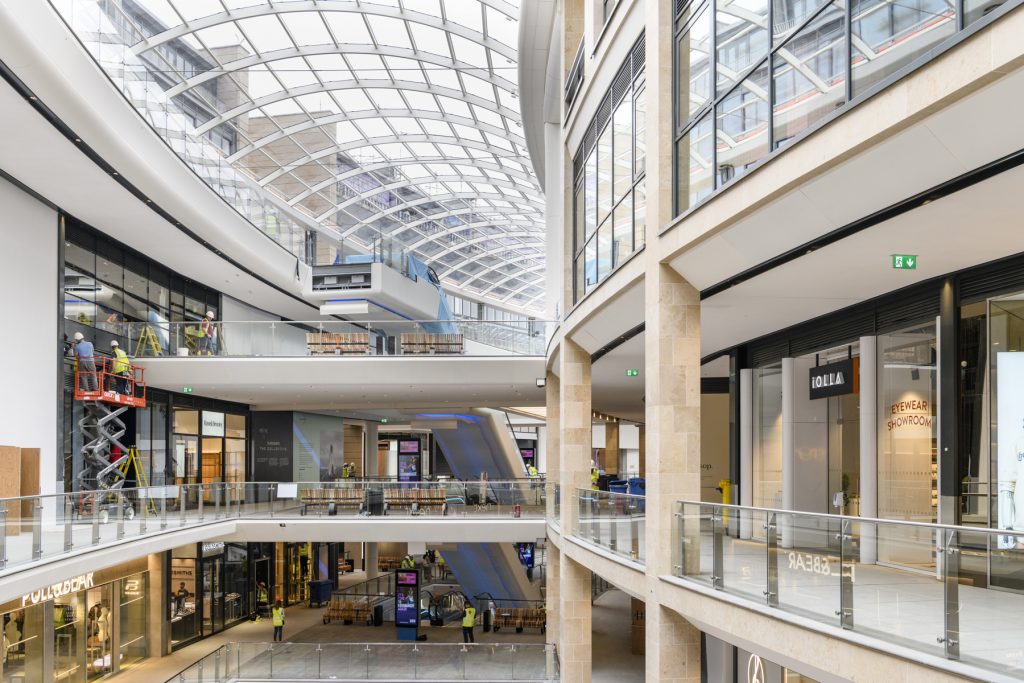// Research by High Streets Task Force shows smaller town centres saw comparatively smaller fall in visitors
// Retail also no longer defines high streets with almost half of town centres now offering wider services
// Call for a simpler approach to planning just over 1/4 of towns have less footfall than their official designation suggests
New research has shown that town centres in England are evolving, with retail no longer the dominant attraction for visitors for almost half of high streets up and down the country.
Data from the High Streets Task Force, which analysed 154 towns, also suggested that Covid-19 has led many people to rediscover their local neighbourhood high streets.
The task force found that 44 per cent of local high streets provide a wide range of different services – i.e. not just retail – to their communities and can be classified as “multifunctional”.
READ MORE:
- Cross party parliamentary group formed to back retail industry
- Bill Grimsey calls for new localised approach to saving high streets
This type of town has increased by eight per cent in the the year ending June 30, and compares to just 19 per cent of town centres that focus predominantly on “comparison retail” to attract visitors.
Experts on the High Streets Task Force, which was commissioned by UK Government in 2019 to support the transformation of England’s high streets, said multifunctional towns and districts that serve their local area have fared better during the Covid-19 crisis.
From March 1 to June 30, footfall in smaller district centres fell by 34.5 per cent, compared to a plunge of 75.9 per cent in larger cities over the same period.
Before the coronavirus pandemic even had an impact, footfall in town centres had fallen by five per cent since 2015.
The task force said its latest research suggests that high streets may not recover to pre-Covid footfall levels.
“The historic decline in footfall we’ve seen doesn’t mean that all high streets are failing,” High Streets Task Force research lead Professor Cathy Parker said.
“It shows that their function is changing. Our research indicates that during and after lockdown, local high streets have been people’s lifeline, for essential retail and services, and as a gateway to local parks and greenspace.
“People are rediscovering their local areas and rethinking what they want from their high streets.”
The task force’s report also calls for a re-think of how towns are classified.
It recommends planning authorities focus on levels of “activity”, or how busy the town is, instead of just defining a town by the amount of retail floorspace it has.
The report said this could ensure that future development and planning decisions are sustainable.
In addition, the task force research shows that just over a quarter – 26 per cent – of towns have less footfall than their official planning designation would suggest.
Many local authorities use a retail hierarchy to designate centres as major city, regional centre, sub-regional centre, major town, town or district.
However, this often doesn’t match the town centre’s footfall volume, with the High Streets Task Force’s research finding no real difference in footfall volumes between centres categorised in planning terms as major towns or towns.
“Over a quarter of towns in our dataset may be setting visions and plans that are, perhaps, unachievable,” Parker said.
“Towns that have a ‘sub-regional’ classification, but where footfall is considerably lower than would be expected, are especially prone to being convinced that more retail or commercial development is the way to regain their status.
“Serving their local population and being a multifunctional hub is a more achievable route to sustainability, generating a stable level of footfall.
“We believe that an ‘activity hierarchy’ is a better way to consider our town centres – as either major cities, regional centres, towns or districts. This simpler approach based on footfall would make for better planning decisions and help to emphasise that for many places, serving their local population with a wide range of services, including health, education, culture and leisure, is a more achievable route to success.”
In highlighting the changing fortunes and role of city centres post-lockdown, the report also highlights the need to consider the livability of cities.
High Streets Task Force chair Mark Robinson said: “The pandemic has brought forward changes that usually take years to occur, instead of ‘how long is the commute’, people are asking ‘do I live within walking distance of the services I need – like food, green space, healthcare, schools and childcare?'”
“It is clear that multifunctional town centres are on the rise and we now have the opportunity to accelerate this to meet the challenge of bringing back into productive use, redundant retail space.”
The High Streets Task Force provides training and data to place managers and has a programme of footfall counting and analytics that is being rolled out across the country.
Its footfall dashboards provide models of annual, monthly, weekly and daily footfall for any town centre location, to support decision making and monitor economic recovery.
Click here to sign up to Retail Gazette’s free daily email newsletter

